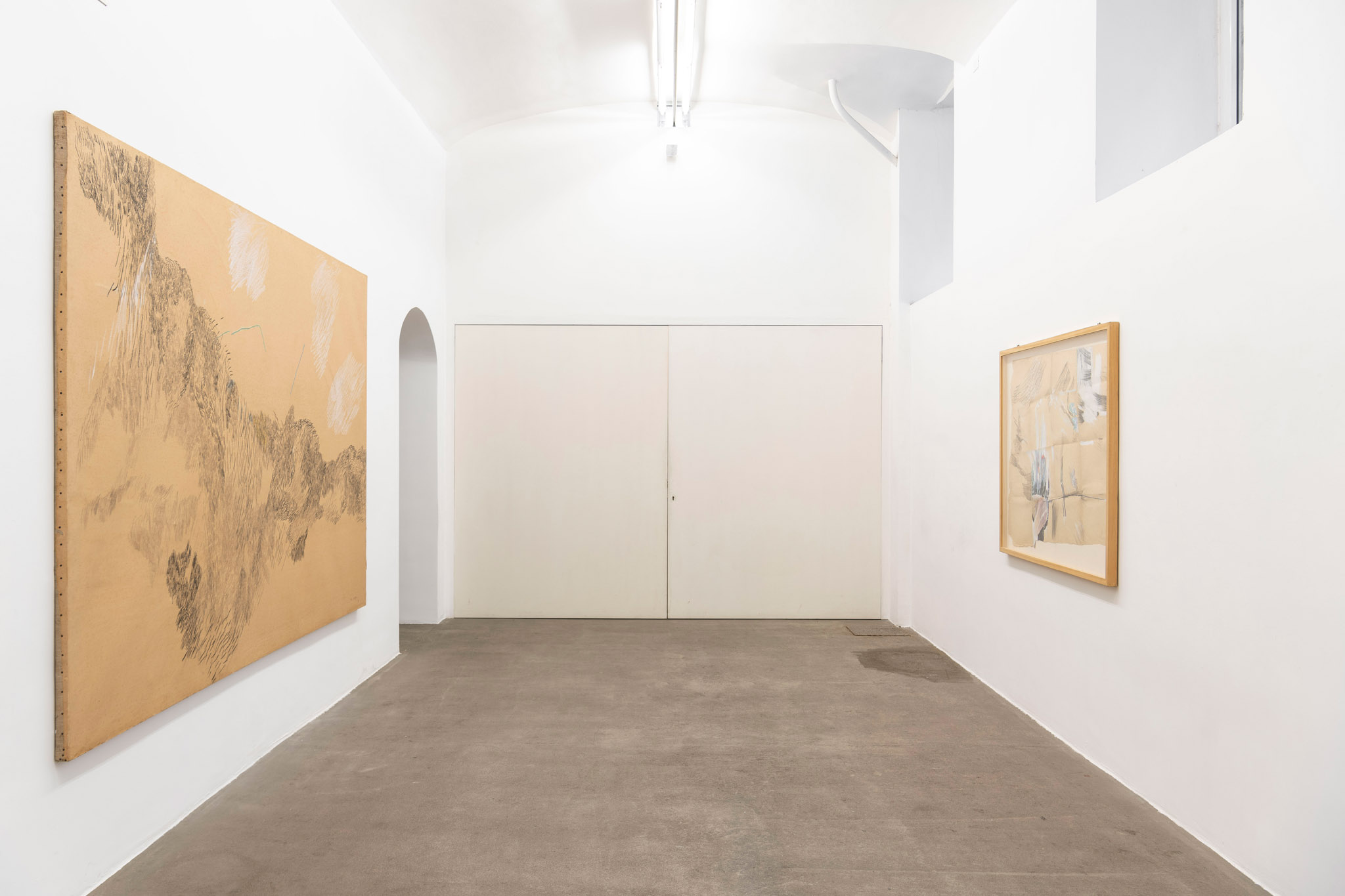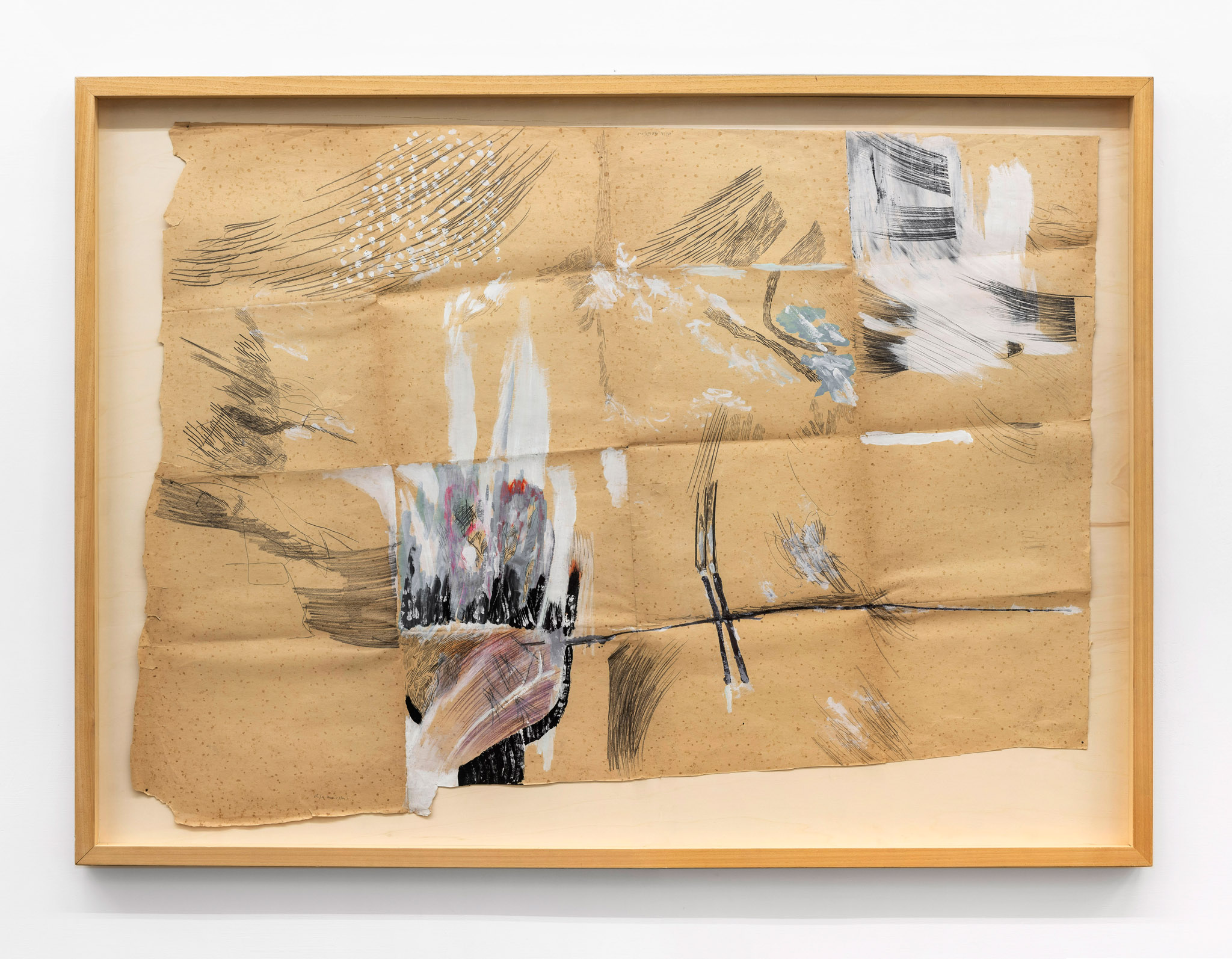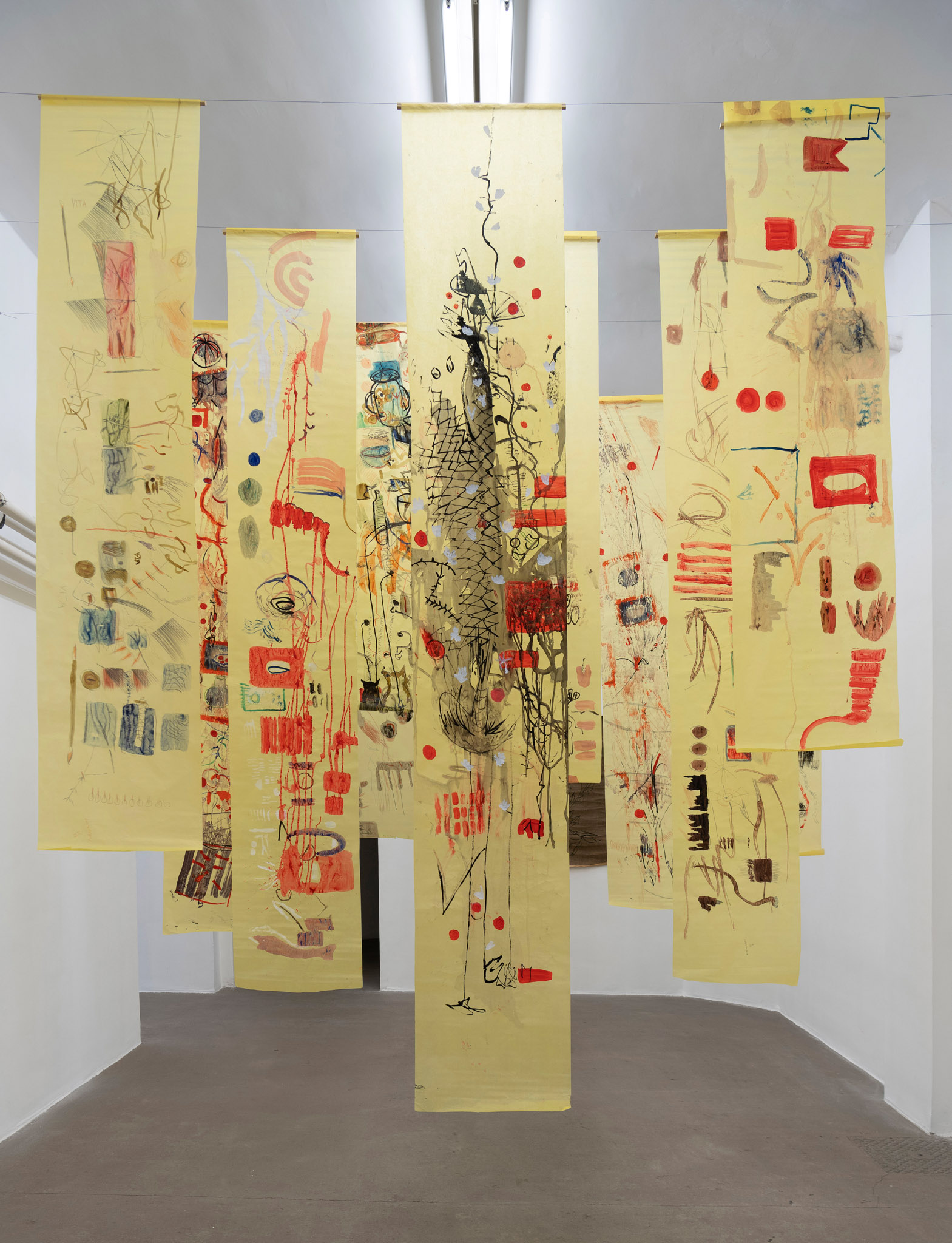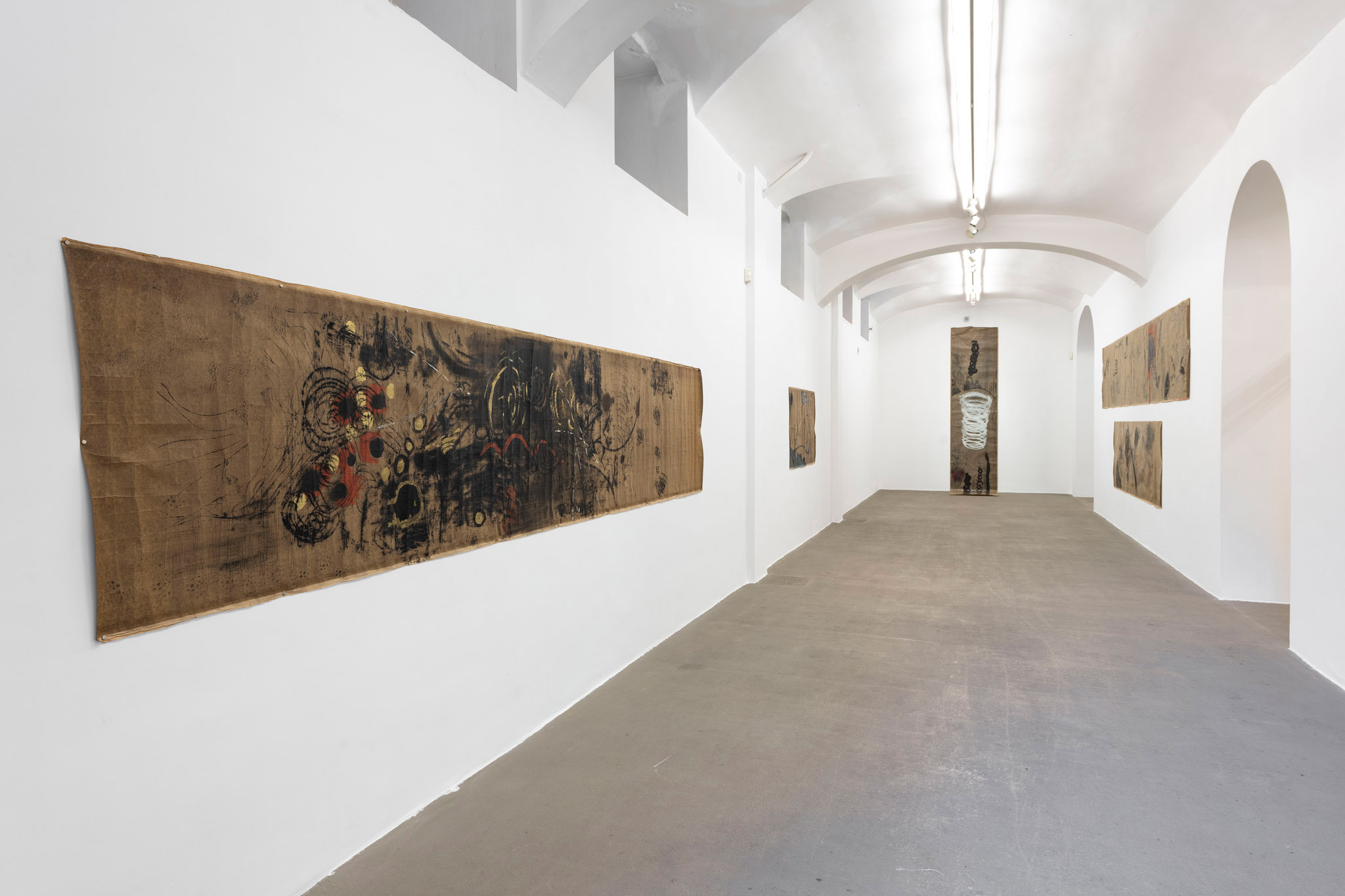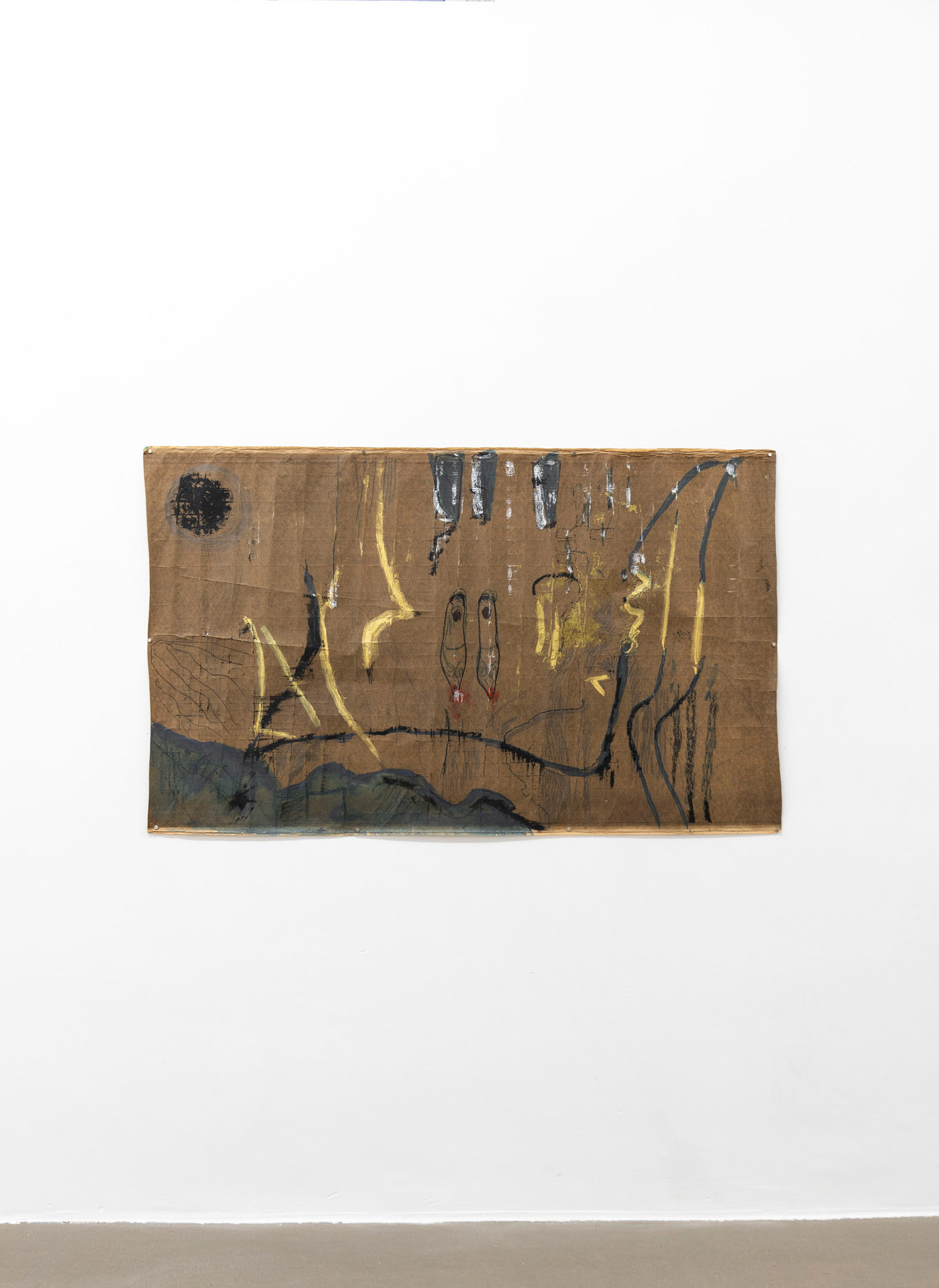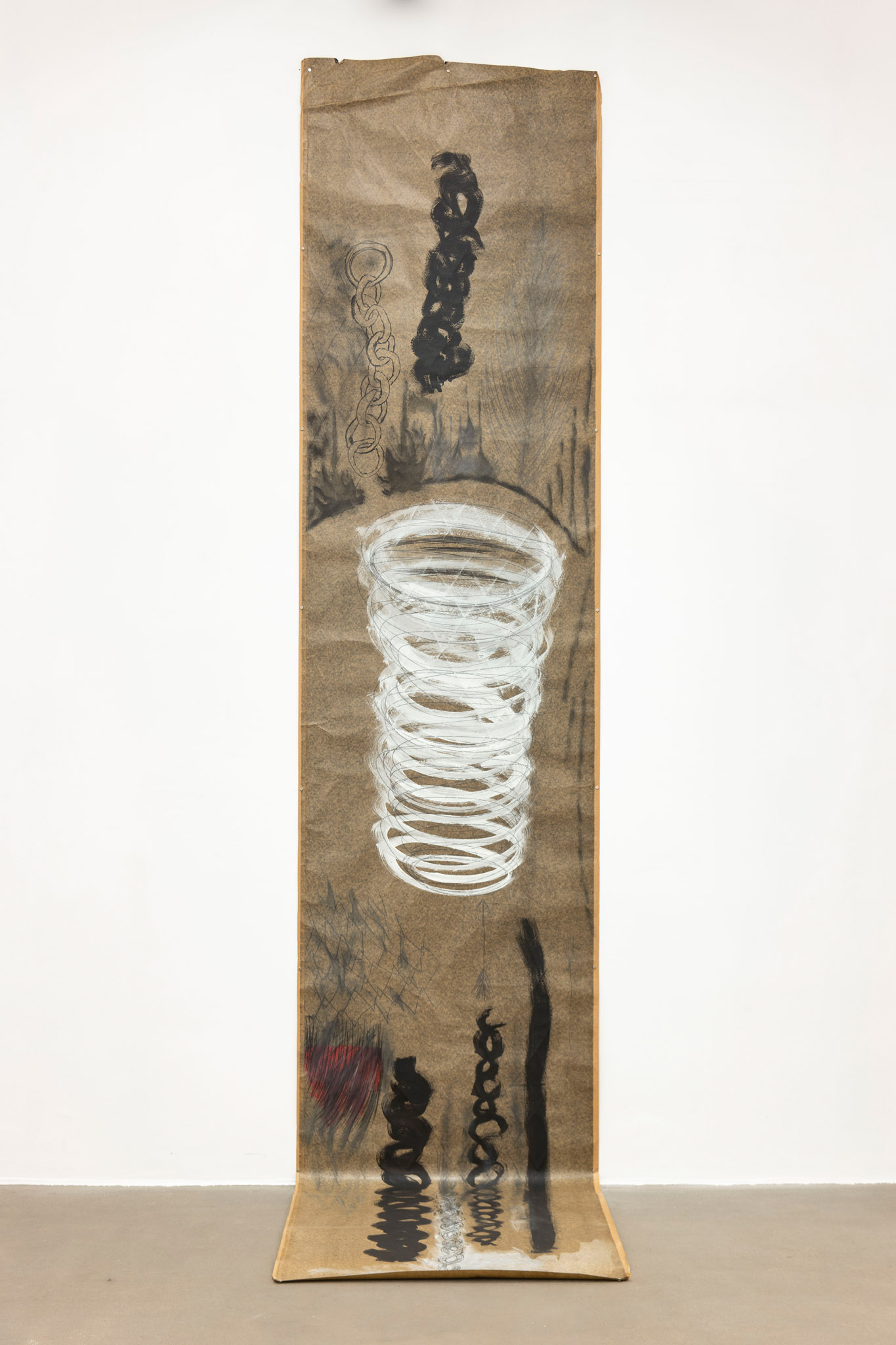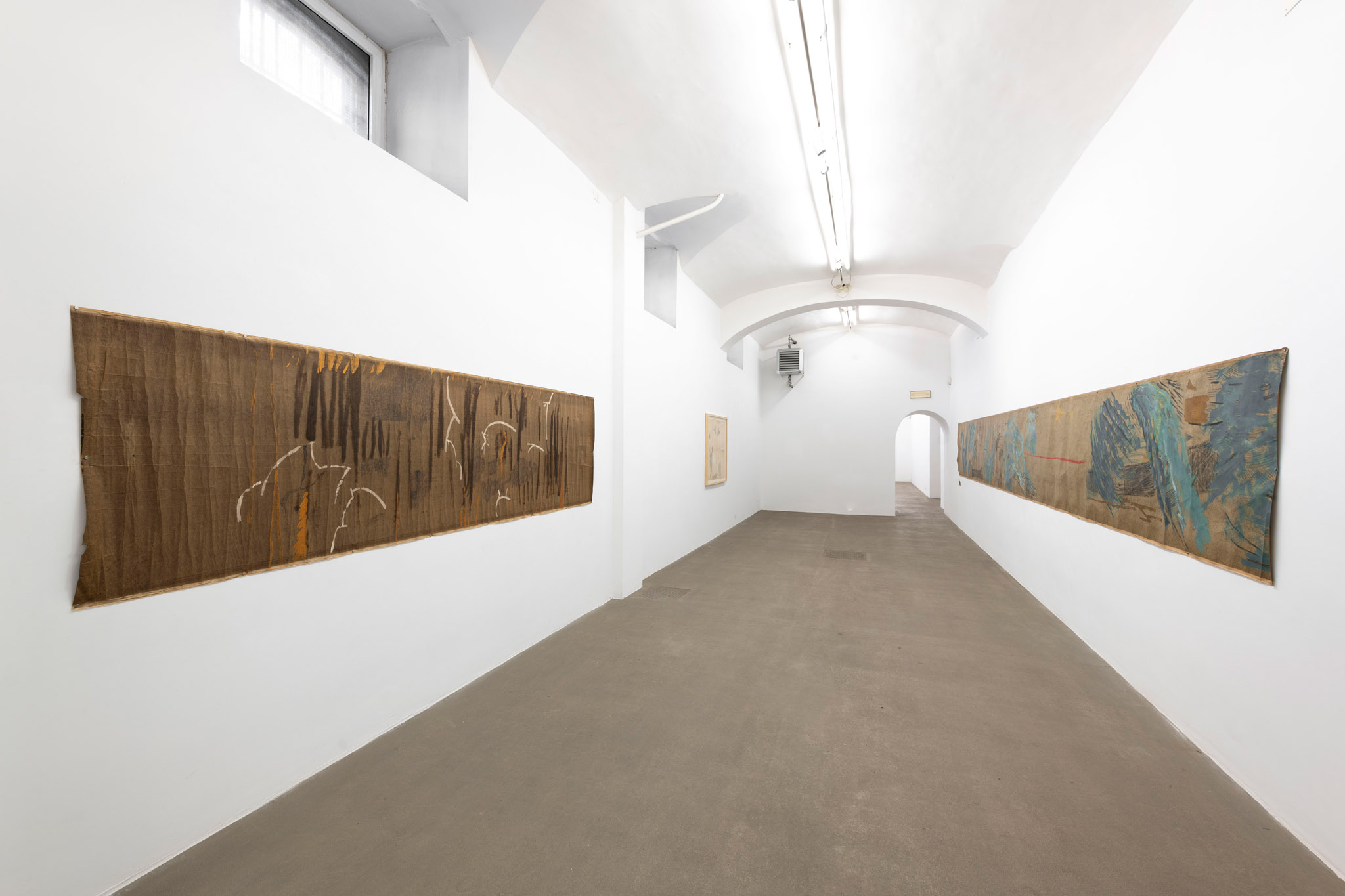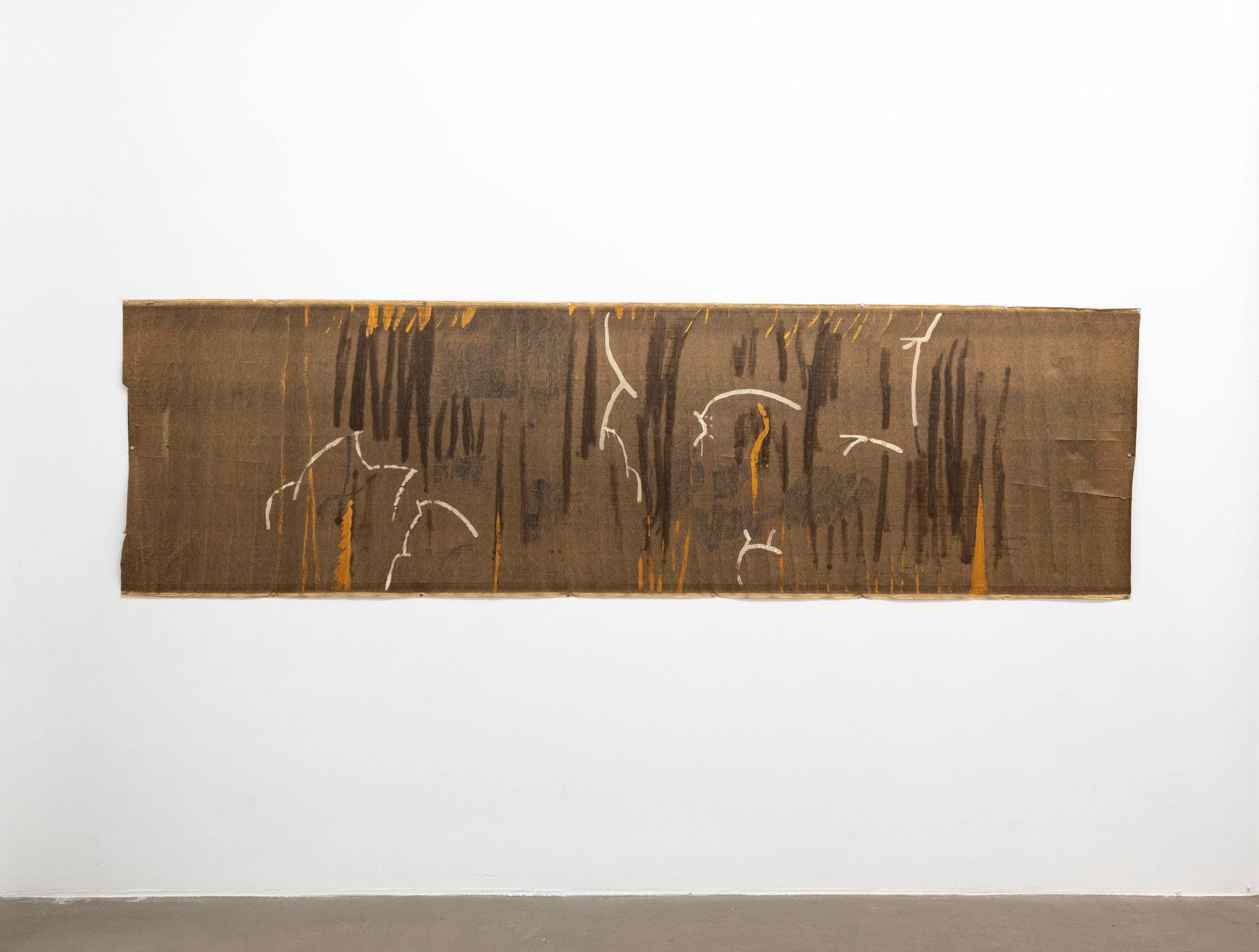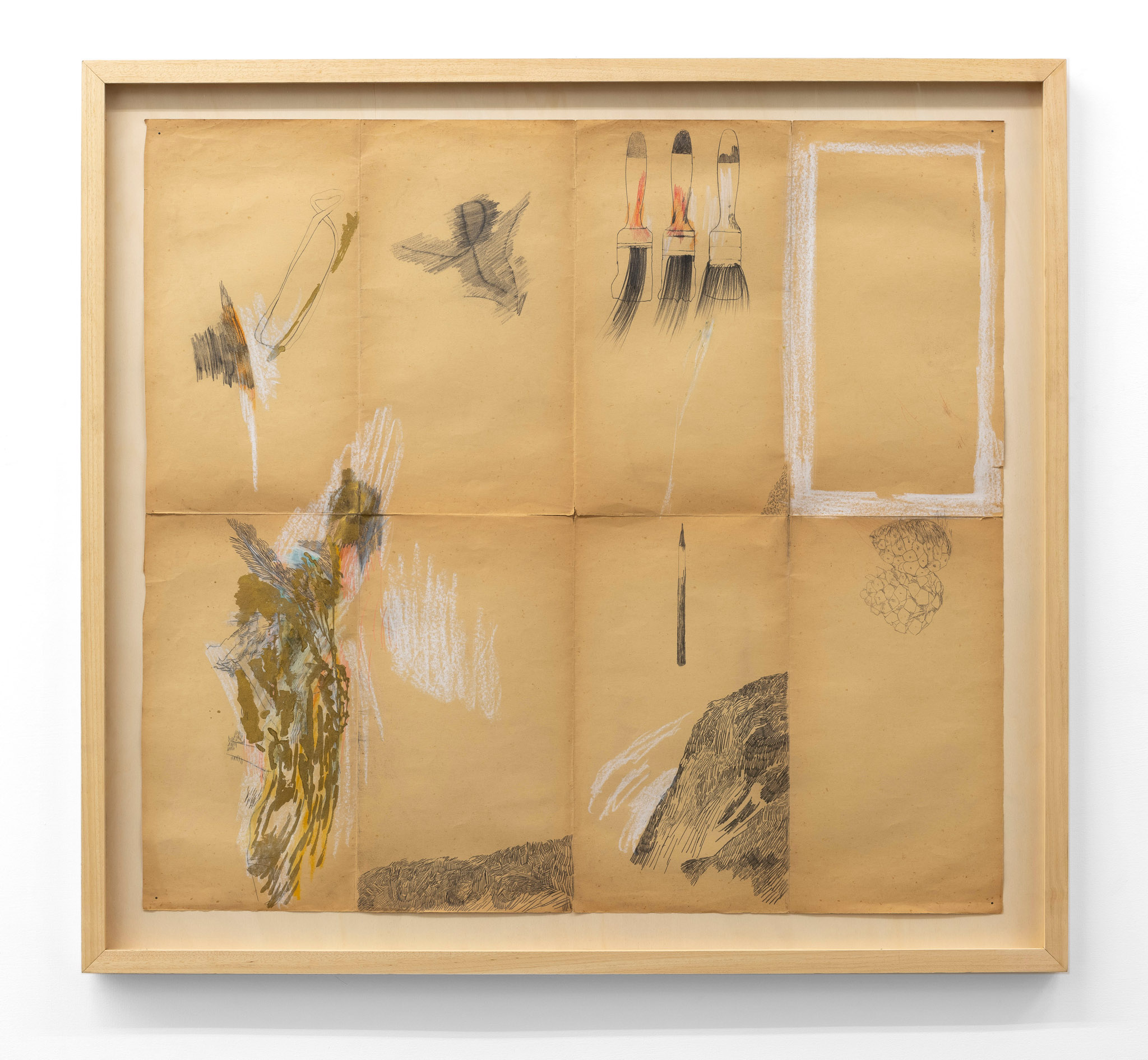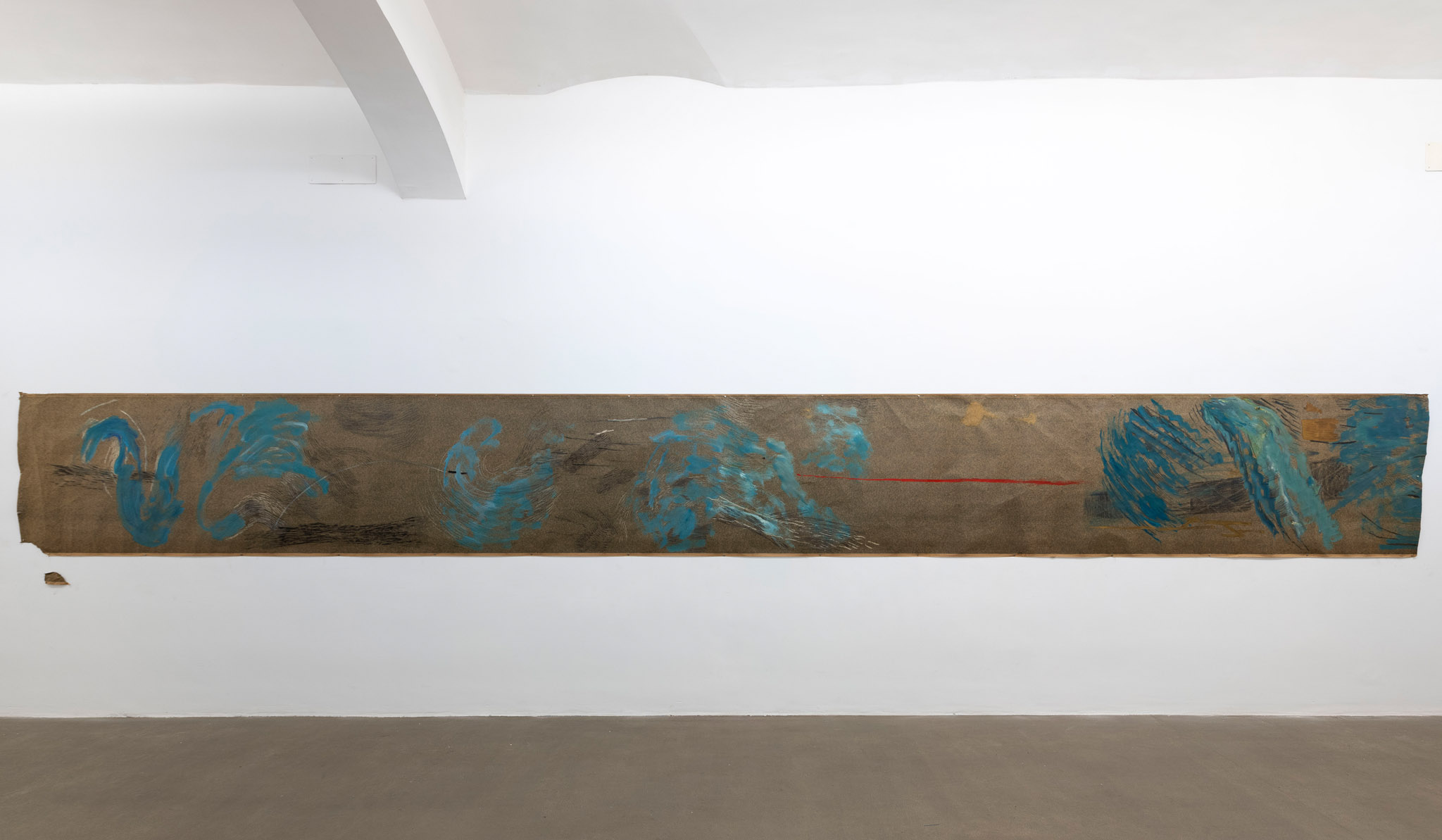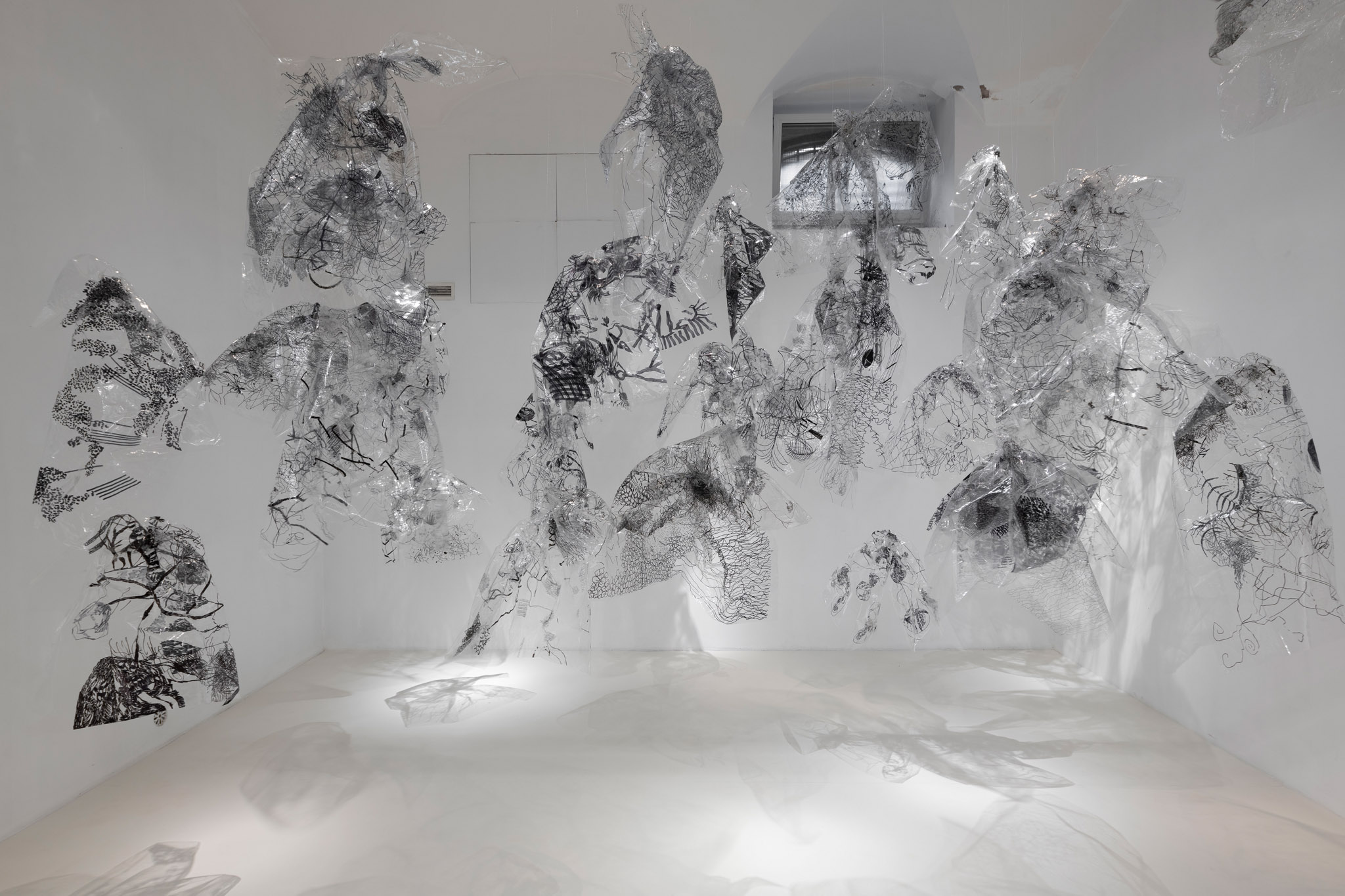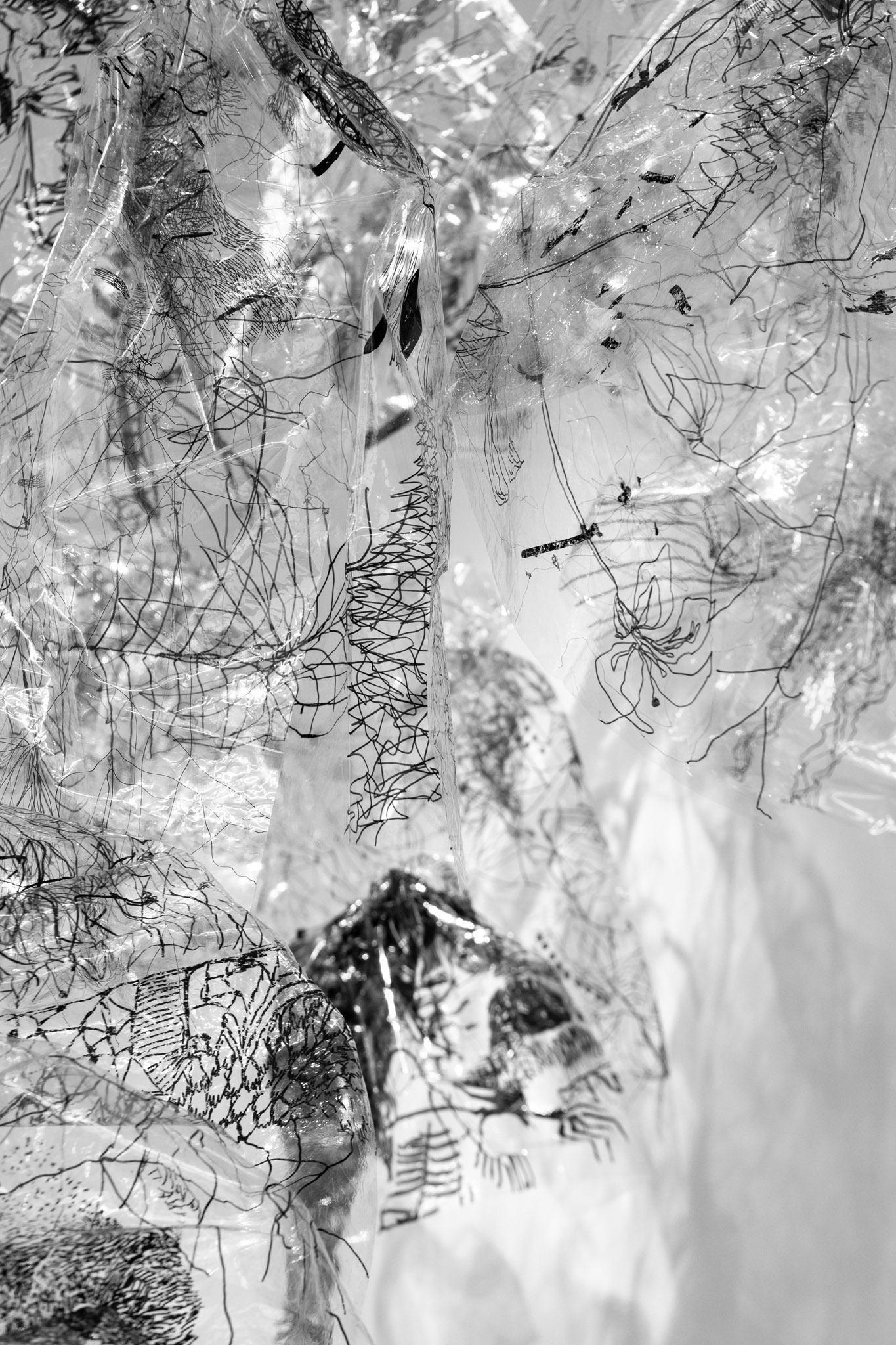Spanning several decades of the artist’s production, the exhibition brings to the fore a series of works on paper, many of which have only rarely been seen previously, signature graphite drawings, and a new configuration of the artist’s cellophane works created specifically for the show. Opacity and transparency, light and shadow, abstraction and figuration: dualities proliferate in the exhibition. Traversing one room to the next, the viewer is led through the spaces of the Foundation along a visual pathway that subtly moves from a dense materialism to a dematerialisation of form.
During the course of her ongoing production and experimentation, the artist has remained fiercely independent of specific categorizations of her work, pushing against any easy distinction between abstraction and figuration. To her, there is no difference, and a panoply of more literal images is often incorporated into abstract panoramas. The images are neither still lifes, nor intended to suscitate simple narratives; instead, they are as complex as the visual matter we encounter when moving through past and present. While the inclusion of these elements may appear ambiguous, they are in fact a visual codex that initiates a concatenation of associations, creating a composition of ideas relating to the relationship between women and nature, the fragmentation of the body, transformation and metamorphosis. Here again, in this literature of images, dichotomies and doublings interpenetrate. A pair of slippers may be the first thing you put on when getting out of bed, but it is also the last thing that remains under the bed when you die; the sickle, an agricultural tool used to cut grain, also symbolizes death as personified by the Grim Reaper wielding his scythe; the wings of a butterfly – in itself the very symbol of change and mutation – consist of two similar but separable parts; the opening and closing function of scissors make them an ideal dialectical symbol.
These metaphorical linkages are at the core of the artist’s work, creating relationships and interconnections that conjoin, shift and transform into something else. The artist never addresses a single theme in her work and leaves it entirely open to new interpretations by the viewer. In this way, the work changes according to its translation, and a single thing or idea transforms into something else; and in that transformation, we are in the very making of the moment.
La camera bianca is presented on the occasion of the Quadriennale d’arte 2020.
Elisa Montessori was born in 1931 in Genova; she lives and works in Rome. A selection of her solo shows include: Lungotevere, Auditorium Parco della Musica, Rome (2018); Fiori Scarlatti Manguste e Volo Notturno, Casa delle Letterature, Rome (2017); Bamboo, Casina delle Civette, Rome (2016); Elisa Montessori. Shangai Blues, Galleria Nazionale d’Arte Moderna, Rome (2006); Paesaggio da Oriente, Parma (1994); Rotoli, Studio Bocchi, Rome (1993-1994); Omaggio a Ingeborg Bachman, Palazzo delle Esposizioni, Rome (1993); Il Giardino delle Effemeridi, Palazzo de André, Ravenna (1990); The painter’s garden, Villa Cuoghi, Fiorano Modenese (1989); Galleria Ugo Ferranti, Rome (1979); Studio d’Arte Lia Rumma, Naples (1977). She has participated in numerous prestigious group exhibitions, including Ecco come Piranesi ha ispirato gli artisti contemporanei, Casa di Goethe, Rome (2020); Vita, morte e miracoli. L’arte della longevità, Museo di Villa Croce, Genoa (2018); Punto uno, Seul, Tokyo, Osaka, Rome (2004); Trasparenza sulla via della carta, Beijing (1993); Festival dei Due Mondi, Spoleto (1989); XI Quadriennale, Palazzo delle Esposizioni, Rome (1986); XVII Biennale d’Arte, San Paolo (1983); International Kunstmesse Art 5’84’’, Basel (1983); Aperto 82/Tempo, XL Venice Biennial (1982); Arteder-’82 – Muestra Internacional de Arte Grafica, Bilbao (1982).

